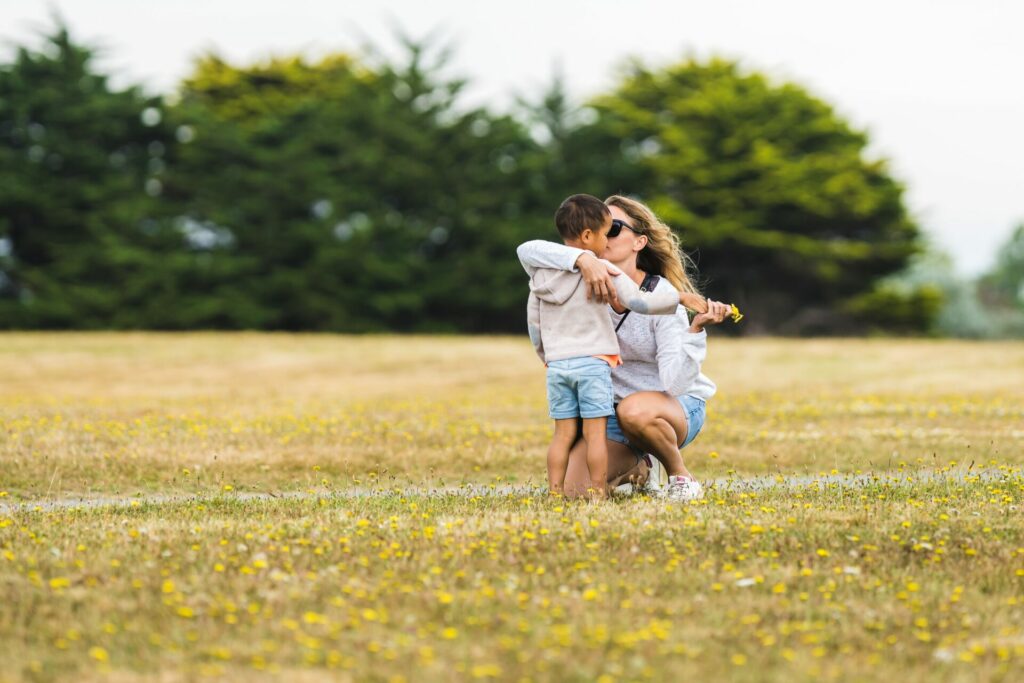
Your little one is growing quickly. Soon they’ll be taking their first adventure away from mom and dad…or maybe they already have! Whether it’s the first day of school, a sleepover at grandma and grandpa’s or just a few hours with their babysitter, these seemingly small steps are major milestones for your entire family. However, as your child leave’s your side, they find themselves fearful, but worry not. This is a normal part of growing up.
What is childhood separation anxiety?
Separation anxiety is the fear or anxiousness most commonly experienced due to prolonged separation between a child and their caregiver. This type of anxiety most commonly develops in infants when they begin to become more cognizant of their surroundings and are developing deeper bonds – usually around six months of age.
Outbursts can often teeter off around age three, but it is not uncommon for anxiety to persist if steps are not taken to curb it. It’s common to notice your child’s mood worsen if they are hungry, tired or sick at the time of your departure.
What are the signs of childhood separation anxiety?
While symptoms can vary between children, several tell-tale signs could indicate your child is experiencing separation anxiety. According to the United Nations International Children’s Emergency Fund (UNICEF), common symptoms of separation anxiety include:
- Becoming more clingy when you are leaving them
- Crying or refraining from letting go in new and unfamiliar situations
- Refusing to go to sleep without you or another caregiver near
- Beginning to cry at night after being able to sleep through the night
How can I ease a child living with separation anxiety?
Separation can be difficult for children and parents alike. While being apart can be tough at first, how you respond to your child’s anxiety and any accompanying outbursts will play a part in their ability to overcome these common fears of abandonment. Try these tips to help ease the worry next time you and your child must separate:
- Keep goodbyes short and sweet. Saying goodbye is always difficult, but prolonging your ritual can make it even harder on a child with separation anxiety. Keep your farewells brief, but maximize the love you give, reassuring your child that there is nothing to fear and that the separation isn’t forever.
- Make dropoffs consistent (when you can). Building a sense of consistency can help to ease your child’s worries. By making dropoffs and pickups routine, your child can pick up on their schedule and form an understanding that your absence is not forever.
- Make promises you can keep. Your child’s trust in you is everything. When leaving them for the day, make promises you know you’ll be able to keep. Rather than saying “I’ll be back at 1 p.m.”, leave out specific wording and make promises kid-friendly, such as “I’ll pick you up after lunchtime.”
- Practice parting with test runs. Instead of leaving your little one for the first time to go on a four-day vacation, try getting them used to time apart with incrementally longer periods of separation. Start with small steps like play dates or leaving them for a night with their grandparents.
- Listen to their worries. It’s only natural that your child will worry when you part ways. Use these moments as a teaching opportunity. Encourage your child to express themselves. Hear them, and then address their fears with understanding and positive reassurance to curb their anxieties.
Overcoming your child’s separation anxiety can be difficult at first, but with time, patience and a commitment to the process, you will both come out the other side stronger and more confident than before.
The CDC Difference
At Children’s Discovery Center, we care for our children as if they are our own. Our compassionate staff provides a safe, welcoming learning environment that allows students to embrace their natural curiosity and thrive as the young explorers they are. Contact us today to learn more about our unique approach to learning, enroll your child and tour our facilities.
 419-867-8570
419-867-8570